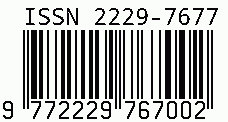
International Journal on Science and Technology
E-ISSN: 2229-7677
•
Impact Factor: 9.88
A Widely Indexed Open Access Peer Reviewed Multidisciplinary Bi-monthly Scholarly International Journal
Plagiarism is checked by the leading plagiarism checker
Call for Paper
Volume 16 Issue 2
2025
Indexing Partners



















Bridging the Healthcare Gap: AI's Role in Expanding Access to Medicaid & CHIP
| Author(s) | Uday Bag |
|---|---|
| Country | United States |
| Abstract | Bridging the Healthcare Gap explores how artificial intelligence technologies are revolutionizing Medicaid and CHIP administrations to expand healthcare access for vulnerable populations. The article examines how AI-driven eligibility engines, automated fraud detection, and robotic process automation are addressing bureaucratic inefficiencies that have historically created barriers to coverage. Through case studies of major health insurers implementing intelligent automation, the article demonstrates how these technologies reduce administrative delays, minimize coverage disruptions, and streamline enrollment processes. By analyzing both technological innovations and their practical applications, this article provides healthcare administrators and policymakers with a comprehensive understanding of how AI can transform public health insurance programs to ensure more equitable healthcare distribution while maintaining program integrity and reducing operational costs. |
| Keywords | Keywords: Healthcare Accessibility, Artificial Intelligence, Medicaid Automation, Eligibility Determination, Administrative Efficiency |
| Field | Computer |
| Published In | Volume 16, Issue 2, April-June 2025 |
| Published On | 2025-04-02 |
| Cite This | Bridging the Healthcare Gap: AI's Role in Expanding Access to Medicaid & CHIP - Uday Bag - IJSAT Volume 16, Issue 2, April-June 2025. |
Share this


CrossRef DOI is assigned to each research paper published in our journal.
IJSAT DOI prefix is
10.71097/IJSAT
Downloads
All research papers published on this website are licensed under Creative Commons Attribution-ShareAlike 4.0 International License, and all rights belong to their respective authors/researchers.

